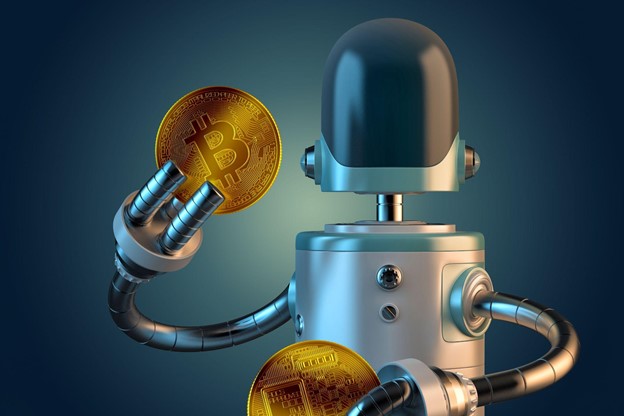Table of Contents
After the traditional tie-cutting ceremony, I began my work at Citi. I spent seven years as a trader at Citi and Merrill Lynch and just began applying my algorithmic trading expertise to the cryptocurrency market. I’m here to share what I’ve discovered in the hope that it may benefit you as well.
As an asset class, cryptocurrencies are very volatile. Now, as a buy-and-hold investor, you do not want volatility. Consider the agony of losing 20% of your hard-earned money in a single day, or even worse, 23% in 15 hours. Ouch! Volatility, on the other hand, is very valuable to a trader.
Also Read:
Being able to invest at a discount during a market meltdown and unload risk during a market euphoria is the lifeblood of a market maker at an Investment Bank.
If we could apply the same concepts to algorithm development and then automate the whole process, that would be fantastic, wouldn’t it? This is precisely what I’ve been working on for the last 1.5 years, and I’m getting close to having something I can share with the rest of the world.
That’s enough about me; let’s get started.
What precisely are cryptocurrency trading bots?
Cryptocurrency trading bots are automated programs that purchase and sell multiple cryptocurrencies at the optimal moment to earn. That is exactly all there is to it. It’s critical to remember that not every bot is lucrative; in fact, the vast majority are not. It’s straightforward to create a functional bot; it’s far more difficult to create a lucrative one.
Ideally, the bots create a profit, which is bigger in risk-adjusted terms than if you had just purchased and held the same coins throughout. When I say risk-adjusted, I mean that your positive returns are greater than your negative returns throughout your investment period. To show this, consider the following: Which would you prefer:
Daily returns of 1% daily with no negative days, for a total return of 250 percent over the year.
Monday returns of 10%, Tuesday returns of -5%, Wednesday returns of 3%, and so on, for a total return of 500% over the year.
I’m hoping you choose the first one. The first example is self-contained. Furthermore, when something is consistent, it becomes far less dangerous. Indeed, you should favor the first example’s constant returns even if the second one ended up returning 1000 percent over the year.
The idea here is that when given a choice between constant (strong) returns and a rollercoaster ride, you should nearly always choose the consistent alternative, even if the rollercoaster trip results in greater future returns. High returns alone are insufficient; you also want high risk-adjusted returns.
And this is precisely why cryptocurrency trading bots are such an intriguing possibility. If we can catch the majority of the upside potential of cryptocurrencies while avoiding the typical gut-punches, this would be a much more compelling investment opportunity than what holders have to offer.
How do cryptocurrency trading bots operate?
The most complex trading bots are composed of three components:
[generator of signals] -> [risk allocation] -> [execution]
Generator of Signals
This is the section in which we make predictions. There will be some data sent into the signal generator, and on the other side, a buy or sell signal will appear. If you encounter any bots that use “technical signs,” it’s generally best to avoid eye contact and just back away slowly.
Allocation of Risk
This receives the buy or sell signal and then determines the amount to purchase. Should we invest our real cash or simply a part of it in this trade? Should we purchase everything at once, or should we spread it out? Now that we know the direction and the amount we want to purchase or sell, the following step is to execute the deal.
Execution
To illustrate, if you have a large amount to purchase in one transaction (say, $10,000,000 for 500 customers), you probably don’t want to do it all at once since you’re unlikely to acquire favorable pricing. You want to trickle your order into the market as little as possible.
If you share the same bot with 1,000 other people and run in separate instances (i.e., they don’t interact with one another), this will result in a much lower price.
Each of the three components, signal, risk, and execution, requires its own set of algorithms and optimization methods. If you have a bot that evades any of these steps, or worse, ignores them entirely, it will not serve you well in terms of profitability.
What is the difference between a trading robot and a human trader?
Longevity. While bots can run 24 hours a day, humans need sleep (and rest).
Speed. Robots function at orders of magnitude quicker than the sum of a human’s cognitive time and response time.
Emotionless. Robots are not motivated by greed or fear. They will always choose the course of action that is statistically more likely to win.
Capacity. Robots can handle terabytes of data each second. Humans cannot handle that much of info in that amount of time.
In summary, operating a bot has several advantages, all of which stem from their skillset being much different from that of a person. Bots are constant and repetitive in their behavior. To be lucrative, you must maintain consistency and, quite honestly, do everything that goes against human nature.
However, it’s important to note that a bot, or any bot, will always be only as good as the person who created it. The phrase “trash in, rubbish out” is correct. There are certain ways humans may outperform machines, mostly via subjective reasoning.
When a piece of information does not have a predetermined consequence and lateral or second-degree thinking is required to comprehend the significance, a person is preferable. This doesn’t concern me too much since a bot can always opt-out of investing when it reaches a pretty subjective stage.

